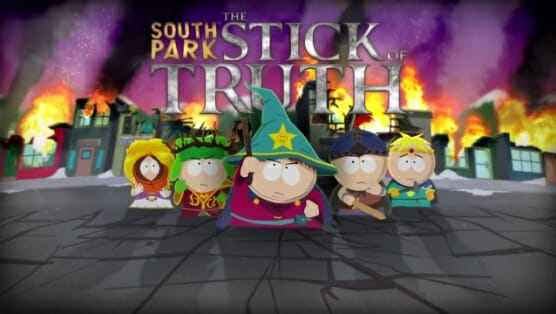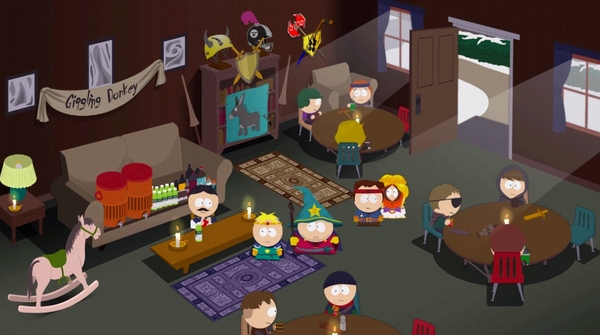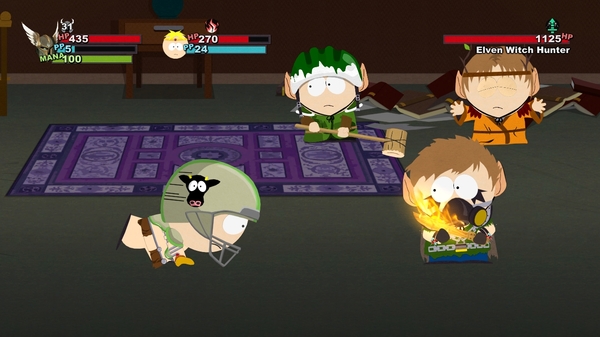South Park: The Stick of Truth (Multi-Platform)

My relationship with South Park has changed a lot since my initial encounters with the show. I can very clearly remember my first episode—“Pinkeye” from the first season—and how it made me feel. It was risqué and I very clearly knew that I was seeing something that was for adults rather than for me. The content was weird, Kenny died in the first moments, and Cartman was dressed like Hitler. In the years afterward, I saw sporadic episodes, but it was my late middle school years that saw me saving up money with friends to buy seasons at a time on DVD. We would pass them around, or better yet stay up all night and marathon the show. The irreverence was a mantra—at that point in my life, the show was for me.
And then, at some point during high school or later, it stopped being for me again. The smugness of the political strategy started rubbing me the wrong way. The show lives on its ability to declare that any political position, conservative or progressive, radical or liberal, is just as bad and illogical as any other. The equivocating across the board got on my nerves, and the language and concepts that the show trades on to make its rhetorical point often directly insulted me or people I care about. I wasn’t in middle school any longer; the “transgressions” were simple and trite, and more often than not I could tune into the show and hear the same ignorant opinions that I could get from any random person in my small, politically conservative Southern hometown. So I stopped watching.
South Park: The Stick of Truth has all of the same problems as the show. If the show has ever offended you, disgusted you, suggested that you may not exist, or directly insulted one of your deeply held beliefs, chances are very good that the game will do the same. I want to be clear on that, because I cannot in good conscience let you proceed without knowing that the song remains the same as to what you can expect from the world of South Park.
I went into the game with an extreme amount of ambivalence. I was cold on South Park, but extremely enamored with Obsidian, with Knights of the Old Republic II and Alpha Protocol topping my list of games that I’ve fallen in love with over the years. I wanted to know what they were doing, and how they were doing it, and how the studio might have managed to meld cursing children with their wonderful brand of role-playing game mechanics.
The Stick of Truth puts you in the town of South Park as New Kid. There are not gender options in the game, and while you can dress New Kid up in the copious amounts of clothes that transcend gender and species, he always remains a he. The game unfolds like an episode of the show, taking a ridiculous premise—the Stick of Truth is caught up in a neo-Tolkien fantasy battle between several groups of children—and taking it as far as it will go. Along the way, there are various story beats and sidequests that bring the player close to various characters and locales from the show. Over the course of my playthrough I saw the goth kids, Lemmywinks, underpants gnomes, Al Gore, Jesus, Stark’s Pond, Terrance and Philip, and quite a few more. Some of these encounters are fresh and new, and some of them feel like tired references in a weak attempt to get you to remember a major plotline from the show.

